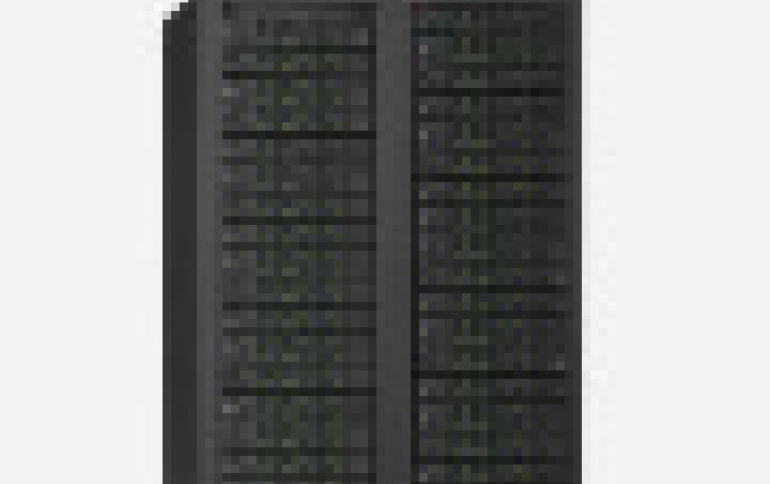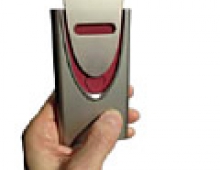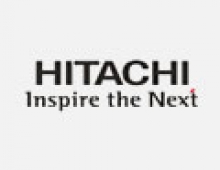
Hitachi Unified Storage Consolidates Manage Block, File and Object Data on a Single Platform
Hitachi Data Systems Corporation, a subsidiary of
Hitachi, today announced the Hitachi Unified Storage
(HUS) platform for the midrange and enterprise markets.
The Hitachi Data Systems strategy for unified management
is to abstract the complexities of the underlying
storage environment to create a service-oriented model
in which organizations manage storage as a service to
their consumers, regardless of the nuances of the
underlying physical devices that serve up the storage.
HUS will be a unified storage platform, meaning that this will support multiple protocols like FC, iSCSI and Ethernet (NFS and CIFS) and manage multiple data types like block, file and object in a single framework. This platform incorporates the FPGA-based file architecture that Hitachi acquired from BlueArc last year. This architecture is based on a single clustered namespace and an object-based file system that enables fast searches, fast replication, and automated tiering and movement of files.
HUS supports object data through an object-based file system that adds metadata for each file and enables automated tiering and migration, fast file snapshots and clones, faster replication over WAN, and fast data searches. Additionally, Hitachi Unified Storage supports Hitachi Content Platform (HCP) for an object store with custom metadata and provides regulatory compliance. HCP can share HUS capacity with file and block applications from the same storage pool.
Besides scaling in capacity, HUS also scales by predictable performance, replicated data, block volume size and file system size.
There are three models of HUS based on capacity. The HUS 150 has a maximum capacity of 3 petabytes with up to 960 drives. The HUS 130 can hold up to 756TB and the HUS 110 has a maximum capacity of 360TB.

The HUS 110 and 130 block modules are slimmed down to 2U trays each with a choice of 24 small form factors (SFF) 2.5 inch drives or 12 large form factor (LFF) 3.5 inch drives. The largest HUS model 150 block module is housed in a 3U drawer which does not have any internal disks. Instead of drives, the 150 block module can house different types of replaceable front-end port modules. Each model has an option to add a file module for NFS, CIFS and FTP file sharing access. The file modules can be installed in single node or clustered configurations.
The difference between the 3 models, 110, 130, and 150 is in the scalability of cache, front end ports, back end ports, clustered file modules, and number of drives that it can support. The HUS 150 with a maximum of 20 high density expansion trays can provide 960 drives across two frames or the width of two data center floor tiles. With 3TB large capacity SAS drives, this is 2.8PB of storage system with 32GB of cache, 16 FC front end 8 GB/sec ports and 32 back-end 6GB/sec SAS links.
HUS will be one of the first enterprise storage systems to utilize the new Multi Level Cell (MLC) 200 and 400GB SSDs, which will lower the cost per capacity from previous Single Level Cell (SLC) technology.
In short, the improvement in performance comes from faster front and back end ports, faster ASICs and processors, and an improvement in memory management. The introduction of metadata enhancements will enable an increase in snapshots to 1024, and improve the performance of memory dependent features like CoW snapshots, full capacity replication and dynamic tiering. The common management tools in Hitachi Command Suite also support it.
Pricing for the HUS line starts at $22,700. For that, a buyer gets a box that only handles block-level data, but that can have a NAS head added to it for future file-level data use. The starting price for a unified system with both file- and block-data access is $52,000. That covers the base hardware, software, installation and 36 months of software maintenance.
Last but not least, the new Hitachi Application Protector, also introduced today, is an application-aware, snapshot-based data protection, backup and recovery software suite for Microsoft Exchange, SQL Server and SharePoint environments. Integrated with Hitachi Unified Storage, Hitachi Application Protector lets administrators for each of these applications protect their data sets using familiar interfaces such as Microsoft Management Console. Application administrators can initiate backup and recovery jobs.
HUS will be a unified storage platform, meaning that this will support multiple protocols like FC, iSCSI and Ethernet (NFS and CIFS) and manage multiple data types like block, file and object in a single framework. This platform incorporates the FPGA-based file architecture that Hitachi acquired from BlueArc last year. This architecture is based on a single clustered namespace and an object-based file system that enables fast searches, fast replication, and automated tiering and movement of files.
HUS supports object data through an object-based file system that adds metadata for each file and enables automated tiering and migration, fast file snapshots and clones, faster replication over WAN, and fast data searches. Additionally, Hitachi Unified Storage supports Hitachi Content Platform (HCP) for an object store with custom metadata and provides regulatory compliance. HCP can share HUS capacity with file and block applications from the same storage pool.
Besides scaling in capacity, HUS also scales by predictable performance, replicated data, block volume size and file system size.
There are three models of HUS based on capacity. The HUS 150 has a maximum capacity of 3 petabytes with up to 960 drives. The HUS 130 can hold up to 756TB and the HUS 110 has a maximum capacity of 360TB.

The HUS 110 and 130 block modules are slimmed down to 2U trays each with a choice of 24 small form factors (SFF) 2.5 inch drives or 12 large form factor (LFF) 3.5 inch drives. The largest HUS model 150 block module is housed in a 3U drawer which does not have any internal disks. Instead of drives, the 150 block module can house different types of replaceable front-end port modules. Each model has an option to add a file module for NFS, CIFS and FTP file sharing access. The file modules can be installed in single node or clustered configurations.
The difference between the 3 models, 110, 130, and 150 is in the scalability of cache, front end ports, back end ports, clustered file modules, and number of drives that it can support. The HUS 150 with a maximum of 20 high density expansion trays can provide 960 drives across two frames or the width of two data center floor tiles. With 3TB large capacity SAS drives, this is 2.8PB of storage system with 32GB of cache, 16 FC front end 8 GB/sec ports and 32 back-end 6GB/sec SAS links.
HUS will be one of the first enterprise storage systems to utilize the new Multi Level Cell (MLC) 200 and 400GB SSDs, which will lower the cost per capacity from previous Single Level Cell (SLC) technology.
In short, the improvement in performance comes from faster front and back end ports, faster ASICs and processors, and an improvement in memory management. The introduction of metadata enhancements will enable an increase in snapshots to 1024, and improve the performance of memory dependent features like CoW snapshots, full capacity replication and dynamic tiering. The common management tools in Hitachi Command Suite also support it.
Pricing for the HUS line starts at $22,700. For that, a buyer gets a box that only handles block-level data, but that can have a NAS head added to it for future file-level data use. The starting price for a unified system with both file- and block-data access is $52,000. That covers the base hardware, software, installation and 36 months of software maintenance.
Last but not least, the new Hitachi Application Protector, also introduced today, is an application-aware, snapshot-based data protection, backup and recovery software suite for Microsoft Exchange, SQL Server and SharePoint environments. Integrated with Hitachi Unified Storage, Hitachi Application Protector lets administrators for each of these applications protect their data sets using familiar interfaces such as Microsoft Management Console. Application administrators can initiate backup and recovery jobs.





















